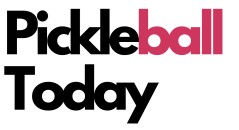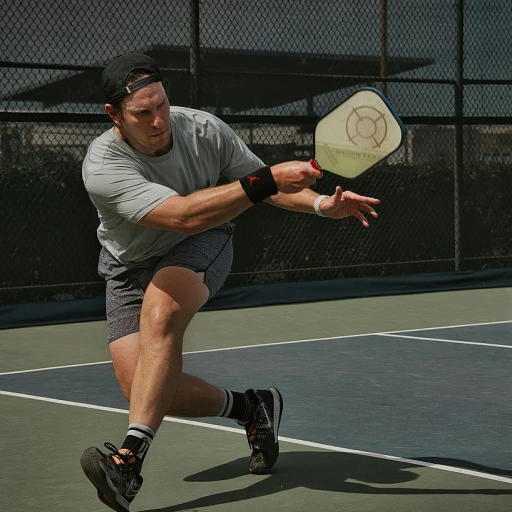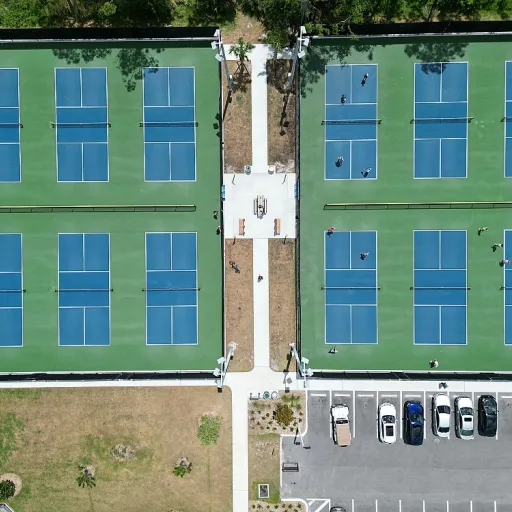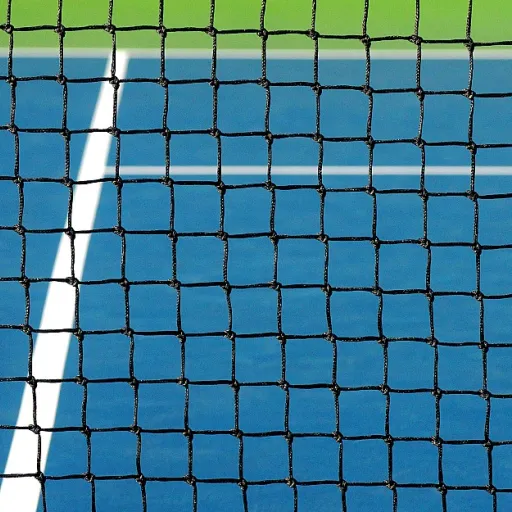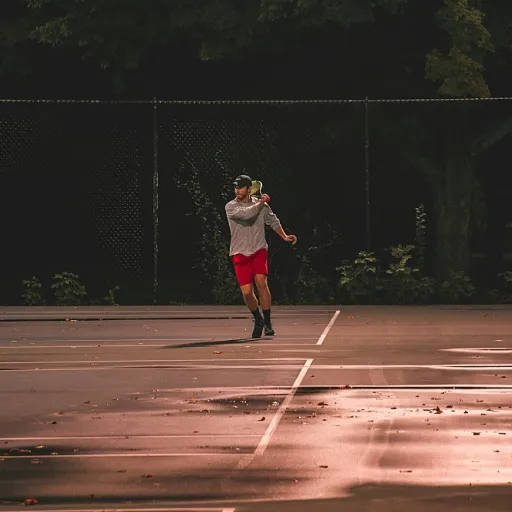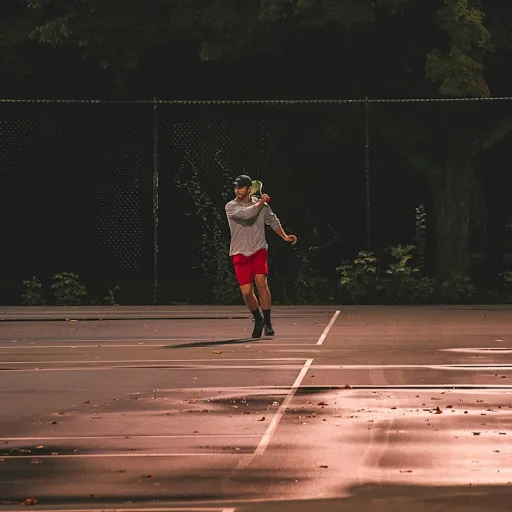
Understanding cross club pickleball leagues
What Makes Cross Club Pickleball Leagues Unique?
Cross club pickleball leagues are transforming the way players and clubs experience the sport. Unlike traditional house leagues, these leagues bring together teams from different clubs to compete in organized matches throughout a season. This structure allows for a broader range of competition and skill development, as players face off against opponents with diverse playing styles and strategies.
- Team-based play: Players represent their home club, forming teams that compete against other clubs in the league.
- Seasonal structure: Most cross club leagues operate in the fall and spring, with tryouts often held in July or August. This gives players time to prepare and clubs to organize their rosters.
- Competitive environment: Matches are scheduled weekly, and league standings are tracked, adding an extra layer of excitement and motivation for players to improve their DUPr ratings and overall performance.
How Do Players and Clubs Participate?
Participation in a cross club pickleball league usually starts with tryouts. Clubs select their teams based on skill level, camaraderie, and commitment to the season. Once teams are set, the league schedules matches, and players compete to earn points for their club. This format not only encourages competitive play but also fosters fun camaraderie and skill development among participants.
For those interested in learning more about how cross club leagues operate in different regions, check out this guide to pickleball leagues in Baltimore for real-world examples and insights.
Benefits for players and clubs
Why Players and Clubs Embrace Cross Club Leagues
Cross club pickleball leagues are bringing a fresh dynamic to the sport, offering both players and clubs unique advantages. These leagues are not just about competition; they’re about building a stronger, more connected pickleball community. Here’s how they’re making a difference:
- Expanded Competition: Players get to compete against a wider range of skill levels and playing styles, which helps everyone grow. Whether you’re aiming for a higher DUPR rating or just want to test your skills, cross club matches offer a real challenge.
- Seasonal Variety: Many leagues run in the fall, spring, or even host special events in July and August. This gives players more chances to join action throughout the year, instead of waiting for a single club league season.
- Team Camaraderie: Being part of a team that represents your club in cross club play builds a sense of pride and fun camaraderie. Weekly matches and team standings add excitement and a reason to keep improving together.
- Skill Development: Regular, competitive pickleball matches against new opponents push players to adapt and learn. This is a great way to accelerate skill development and prepare for higher-level play.
- Club Growth: Clubs benefit from increased visibility and engagement. Hosting or joining a cross club league can attract new members, especially those looking for more competitive or social opportunities beyond house leagues.
- Inclusivity: Tryouts will often be open to a range of skill levels, so more players get the chance to compete. This helps foster a welcoming environment for everyone, from beginners to seasoned competitors.
For those looking to experience something different, some cross club leagues even offer unique formats like glow-in-the-dark pickleball nights. If you’re curious about where to play glow-in-the-dark pickleball near you, check out this guide to local glow-in-the-dark pickleball.
Ultimately, cross club pickleball leagues are about more than just standings or trophies. They’re about connecting players, building skills, and making the sport more accessible and exciting for everyone involved.
Organizational challenges and solutions
Managing Logistics and Scheduling
One of the biggest hurdles for any cross club pickleball league is organizing matches across multiple clubs. Coordinating schedules between clubs, especially during busy seasons like fall and spring, can be complex. Clubs need to agree on match days, times, and locations. For example, some leagues rotate play between clubs each week, while others host all matches at a central location. This requires clear communication and early planning to avoid conflicts with house leagues or other club events.
Ensuring Fair Competition
Balancing teams for competitive play is another challenge. Clubs often use tryouts to assess players’ skill levels, sometimes referencing ratings like DUPR to create evenly matched teams. Tryouts will usually take place in July or week August to prepare for the upcoming season. This helps ensure that matches remain competitive and enjoyable for all participants, regardless of their experience. It also encourages skill development and camaraderie skill among players from different clubs.
Tracking Standings and Player Progress
Maintaining accurate standings and tracking individual player progress across clubs is essential for a successful league. Many cross club leagues use digital platforms to record match results, update standings, and communicate with players. This transparency keeps everyone engaged and motivated to compete throughout the season. For a closer look at how a large urban venue manages these logistics, check out this guide to playing pickleball at Big City Pickle Fulton Market.
Building Community While Overcoming Challenges
- Encouraging clubs to collaborate on league rules and match formats
- Fostering open communication between league organizers and players
- Promoting fun camaraderie and inclusivity, even in competitive settings
By addressing these organizational challenges, cross club pickleball leagues create a dynamic environment where players can join action, compete, and grow together. The effort pays off in stronger club relationships and a more vibrant pickleball community.
How cross club leagues foster inclusivity
Building Connections Across Clubs
One of the standout features of cross club pickleball leagues is how they bring together players from different backgrounds and skill levels. Instead of being limited to matches within a single club, players get the chance to compete against a wider range of opponents. This not only makes the league more competitive, but also helps everyone learn cross strategies and styles of play.
Encouraging Inclusivity Through Team Play
Cross club leagues often use team formats, which means players of various abilities can participate together. Tryouts will sometimes be held in the fall or spring to form balanced teams, ensuring that both experienced and newer players get a fair shot. This approach fosters camaraderie skill development and fun camaraderie, making everyone feel welcome, regardless of their dupr rating or experience level.
Opportunities for All Seasons
Many leagues run multiple seasons, with matches scheduled week to week from July through August or during other parts of the year. This flexibility allows players to join action when it fits their schedule, whether they are looking for a competitive pickleball experience or just want to enjoy the social side of the sport. House leagues and club league formats both help keep things accessible for everyone.
Tracking Progress and Standings
Using systems like dupr, cross club pickleball leagues can track player progress and team standings. This transparent approach motivates players to improve and gives everyone a clear sense of where they stand. It also helps clubs identify areas for skill development and recognize top performers, further encouraging participation from all levels.
- Players from different clubs compete together, expanding social circles
- Team tryouts and balanced rosters promote fairness
- Flexible seasons (fall, spring, summer) make it easy to participate
- Standings and stats help everyone see their growth
Tips for joining or starting a cross club league
Getting Started: Steps to Join or Launch a Cross Club League
If you’re eager to join the action in a cross club pickleball league, or even start one at your local club, here are some practical tips to help you navigate the process and make the most of your experience.- Research Local Opportunities: Many clubs announce upcoming league seasons—like fall, spring, or even special summer events—on their websites or social media. Watch for announcements about tryouts, team formation, or open registration periods, often held in July or the week of August.
- Understand the League Structure: Each league may have different formats, such as house leagues or more competitive team-based play. Some use DUPr ratings to balance teams and ensure fair matches. Clarify how standings are tracked and how matches are scheduled across clubs.
- Prepare for Tryouts: Tryouts will often be required for more competitive pickleball leagues. These sessions help organizers assess skill development and place players on appropriate teams. Don’t be discouraged if you’re new—many leagues welcome all levels and focus on fun camaraderie as much as competition.
- Connect with Club Organizers: Reach out to club managers or league coordinators to learn cross club requirements, fees, and schedules. They can guide you through the registration process and answer questions about team placement or match logistics.
- Build Your Team or Join as a Free Agent: Some leagues allow you to form your own team with friends, while others assign players to teams to promote inclusivity and camaraderie skill development. If you don’t have a team, sign up as a free agent—many clubs are happy to match solo players with teams needing extra members.
Making the Most of Your League Experience
- Commit to the Season: Whether you’re playing in the fall, spring, or a shorter summer session, try to attend all scheduled matches. Consistent participation helps your team compete for standings and builds stronger club connections.
- Embrace the Social Side: Cross club leagues are about more than just competitive pickleball. Take time to meet players from other clubs, share tips, and enjoy the fun camaraderie that comes with league play.
- Track Your Progress: Many leagues use DUPr or similar systems to track player development. Use these tools to set goals and monitor your improvement over the course of the league.
- Stay Informed: Keep an eye on club communications for updates about upcoming seasons, playoff formats, or special events. This ensures you never miss a chance to compete or join new leagues.
The future of cross club pickleball competition
What’s Next for Cross Club Pickleball?
Cross club pickleball leagues are quickly becoming a mainstay in the sport’s landscape. As more clubs and players embrace this format, the future looks promising for both competitive and recreational participants. Here’s what to expect as these leagues continue to evolve:
- Growth in Participation: With the popularity of pickleball on the rise, more clubs are forming cross club leagues. This means more opportunities for players to join action-packed matches, whether during the fall or spring season.
- Enhanced Competitive Structure: The use of systems like DUPR for tracking player ratings and league standings is making matches more competitive and transparent. Players can monitor their skill development and see how they stack up across clubs.
- Expanded Tryouts and Team Formation: Tryouts will likely become more common as clubs seek to build balanced teams. This encourages both new and experienced players to participate, fostering camaraderie skill and fun camaraderie within and between clubs.
- Flexible Scheduling: Leagues are experimenting with different formats, including week August kickoffs, house leagues, and special events in July. This flexibility helps accommodate busy schedules and keeps the sport accessible.
- Focus on Inclusivity: As discussed earlier, cross club leagues are breaking down barriers, making it easier for players of all backgrounds to compete and connect. This trend is expected to continue, with more clubs prioritizing inclusive play and community building.
Staying Ahead in the Evolving League Scene
For those looking to get involved, it’s a great time to learn cross club league formats and explore local opportunities. Whether you’re aiming for competitive pickleball or just want to enjoy the fun camaraderie of team play, there’s a place for everyone. Keep an eye out for announcements about tryouts, new league launches, and upcoming matches—especially as the sport gears up for another busy season.
As cross club pickleball continues to grow, expect more innovation in league organization, skill development programs, and ways to foster lasting connections among players. The future of club pickleball is bright, and there’s never been a better time to join the action.
